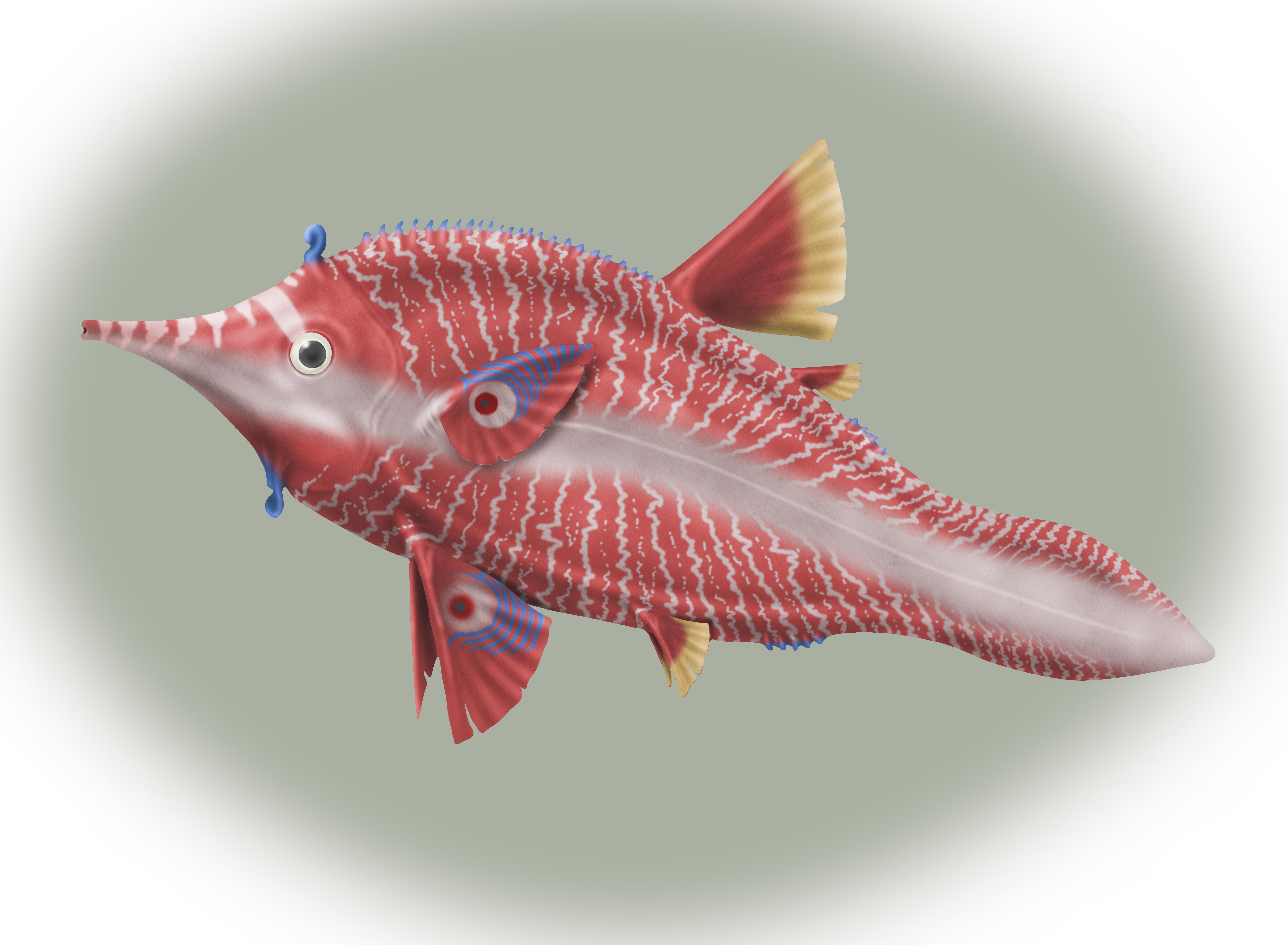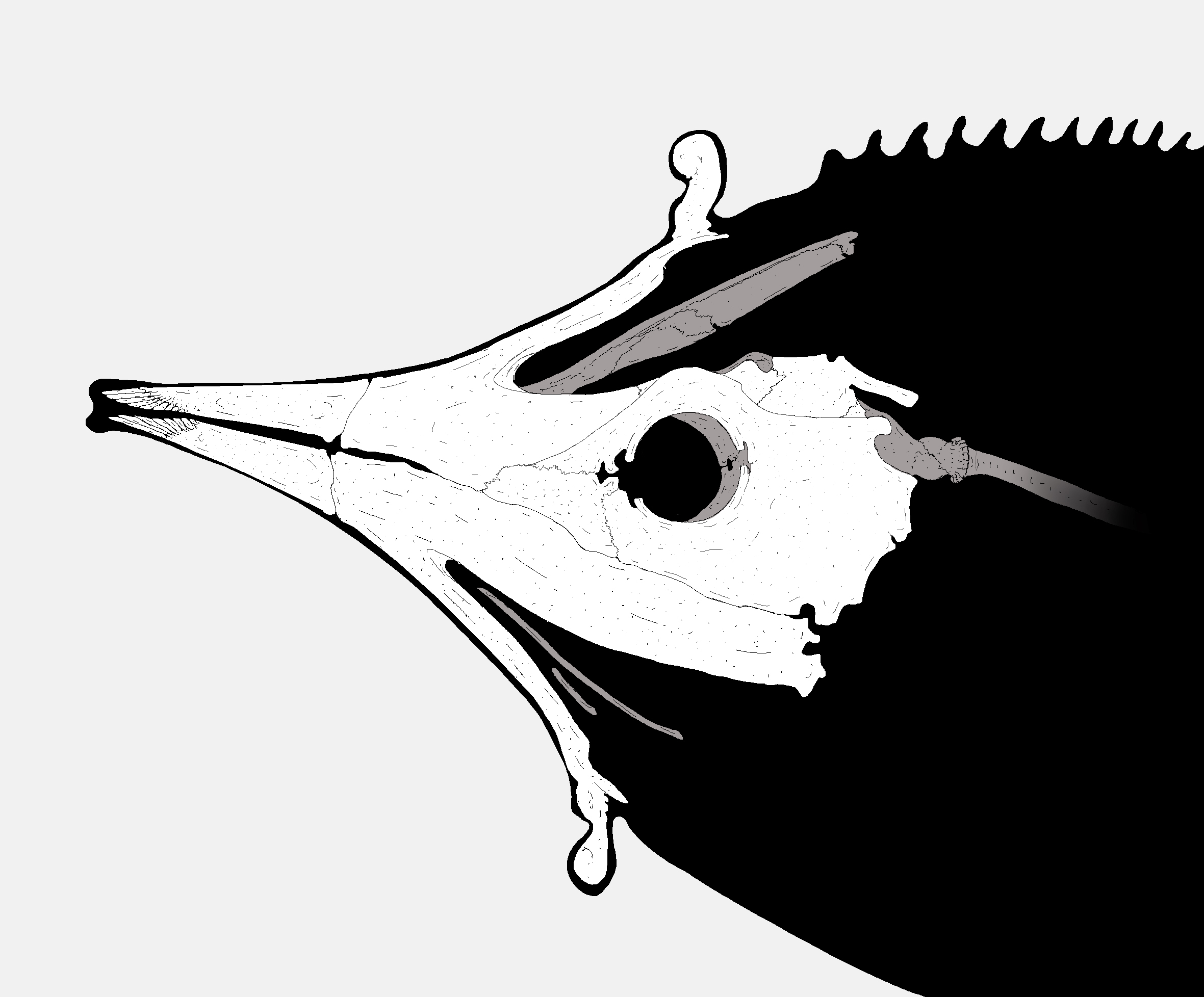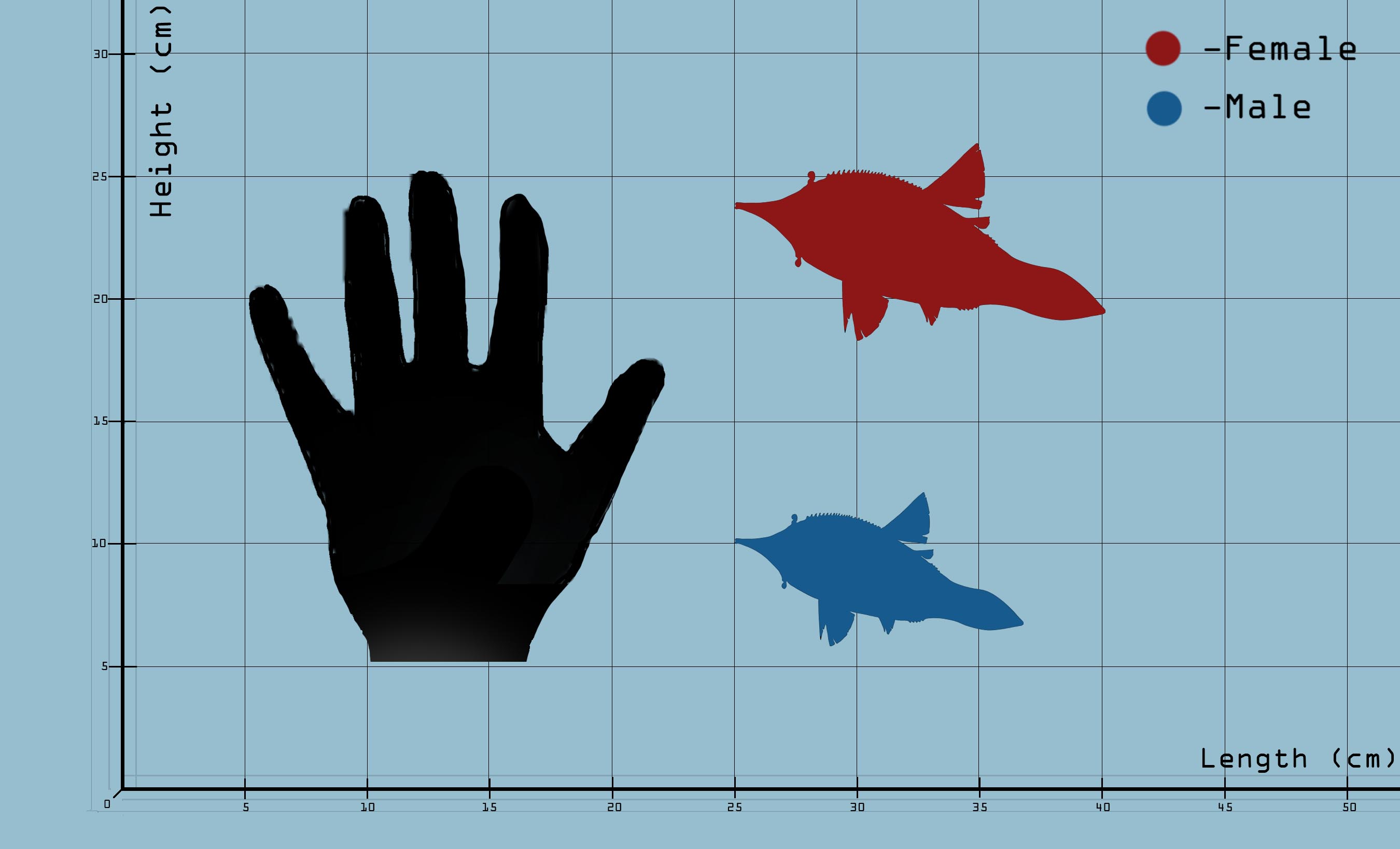Herald Kika
Kika kika is a small Philloichthyd Hijerakid amphibian from the Tropical reefs of the Gulf Sea.
This small animal, often called Herald or Peppermint Kika is found living among the dense shallow reefs south of the coast of New Louisiana, finding refuge in the under-reef from predators, when its primary defence mechanism doesn't work.
K. kika, when threatened, congregates is a tightly packed group, swimming towards the potential threat's face, opening wide the pectoral and Anal I fins to show the ocellations; by creating a bubble around the predator's head, they try to scare it away by seeming a far larger group of possibly dangerous animals; when this strategy doesn't work, the amphibian quickly retreats to the under-reef, where they have the upper hand given their size and weight.
Like most members of its family, K. kika is a pollinating animal; using the very long and mobile tongue it feeds on the nectar kept deep inside flowering proto-sponges, carrying the pollen from sponge to sponge.
As with many of these specialists, the specific sponge species and the animal pollinating it have evolved mutually, with some of the former adapted to accept only K. kika as a vessel for its pollen, with specifically evolved canals made to be traversable only by the species.
As with many very colourful and active animals, K. kika is among the most popular animals to keep in tropical aquariums while also contributing to local ecotourism.
Basic Information
Anatomy
- Head triangular with a very thin snout; one hornlets on each side of the head.
- Twentyfour small serrations on the back from the head to the base of the dorsal I fin.
- four serrations growing along the Gill Tail on the back, five serrations growing at the same haigth but on the ventral side.
- All fins outside of the pectoral subrectangular and quite small compared to the body.
- Pectoral fin leaf shaped.
- Gill Fan long and lonw with a soft caudal drop.
Genetics and Reproduction
Promiscuous species.
K. kika mates during the sponge blossoming periods, when the new buds grow into flowers.
Males enter heat a few days before the females, changing into the brighter patterning intended to attract mates.
Females of the species will select males based on how bright the colouration is and how defined the ocellations are on the fins; to court a female, the male will try to gain her undivided attention by swimming in front of her, close to the face, and showing off the ocellations, much in the same fashion as they do with predators; wherever the female moves, the male will follow, trying his best to avoid her looking elsewhere; if the female is convinced, she'll start mirroring the male's dance, the male then moves belly-side up and waits, if the female moves above him and does the same, then the male is in the clear and can proceed to mate.
Once mating is finished, the couple will disband and the male will start to look immediately for the next partner; the female will move into the under-reef to lay her eggs after thirty minutes from insemination; she'll soon mate again.
The eggs hatch two to four days after being laid, depending on the nesting conditions.
Growth Rate & Stages
Ontogenesis on the species not very marked outside of the spawn being semi-transparent at birth.
The hatchlings lose the natal aculeus while swimming out of the egg.
Ecology and Habitats
Epipelagic species living at depths between 5 and 20 m in the neritic zone.
Lives in the inner reefs of the Gulf Sea in shallow waters, with plenty of light and warmth, usually found near flowering proto-sponges meadows.
Dietary Needs and Habits
Pollinating creature feeding on the nectar of specific Proto-sponges.
Biological Cycle
Periannial creature with no dips in activity year long.
Additional Information
Social Structure
Very social animal living in groups of several tens of specimens; they will stray a bit from one another while feeding but are very quick to reunite to scare off threats to both them and the sponges they feed from.
Especially when in the under-reef they show various degrees of social behaviours ranging from small range communication to physical contact such as grooming.
Domestication
Very popular in tropical aquariums due to the size and bright colouration, will accept both bottled nectar and, if trained to, fresh algae paste, although the latter is not recommended for it will make the animal slightly paler and reduce their lifespan significantly as it's not their natural nutrition.
Recommended to owners with a bit of experience in keeping tropical animals.
Uses, Products & Exploitation
Of major impact in the tourism market, especially for ecoturism based on the abundant coral reefs of the area.
Also of great importance in the pet trade as a popular aquarium animal for tropical tanks.
Perception and Sensory Capabilities
Exceptional sight and smell.
Symbiotic and Parasitic organisms
Sometimes afflicted by small drinker worms.
In a mutualistic relationship with the Proto-sponges they pollinate, both helping them to reproduce in exchange for food and by protecting the "plant" itself from animals that would otherwise eat it.
Scientific Name
Eoichthyia; Hijerakia; Parahijerakida; Coronapinninoidea; Philloichthydae ; Kika; K. kika
Lifespan
6 Years
Conservation Status
Least Concern: no measures underway to protect the species.
Population Trend: STABLE
Average Weight
5-20 gr
Body Tint, Colouring and Marking
Light red to pink body with lighter bands across its lenght, single large horizontal band along the mid section of the body.
Hornlets and serrations blue to purple, same colour as the striping on the Pectoral and Anal I fins.
All other fins bright yellow to sand coloured tipped.
Pectoral and Anal I fins ocellated.
Remove these ads. Join the Worldbuilders Guild













Comments